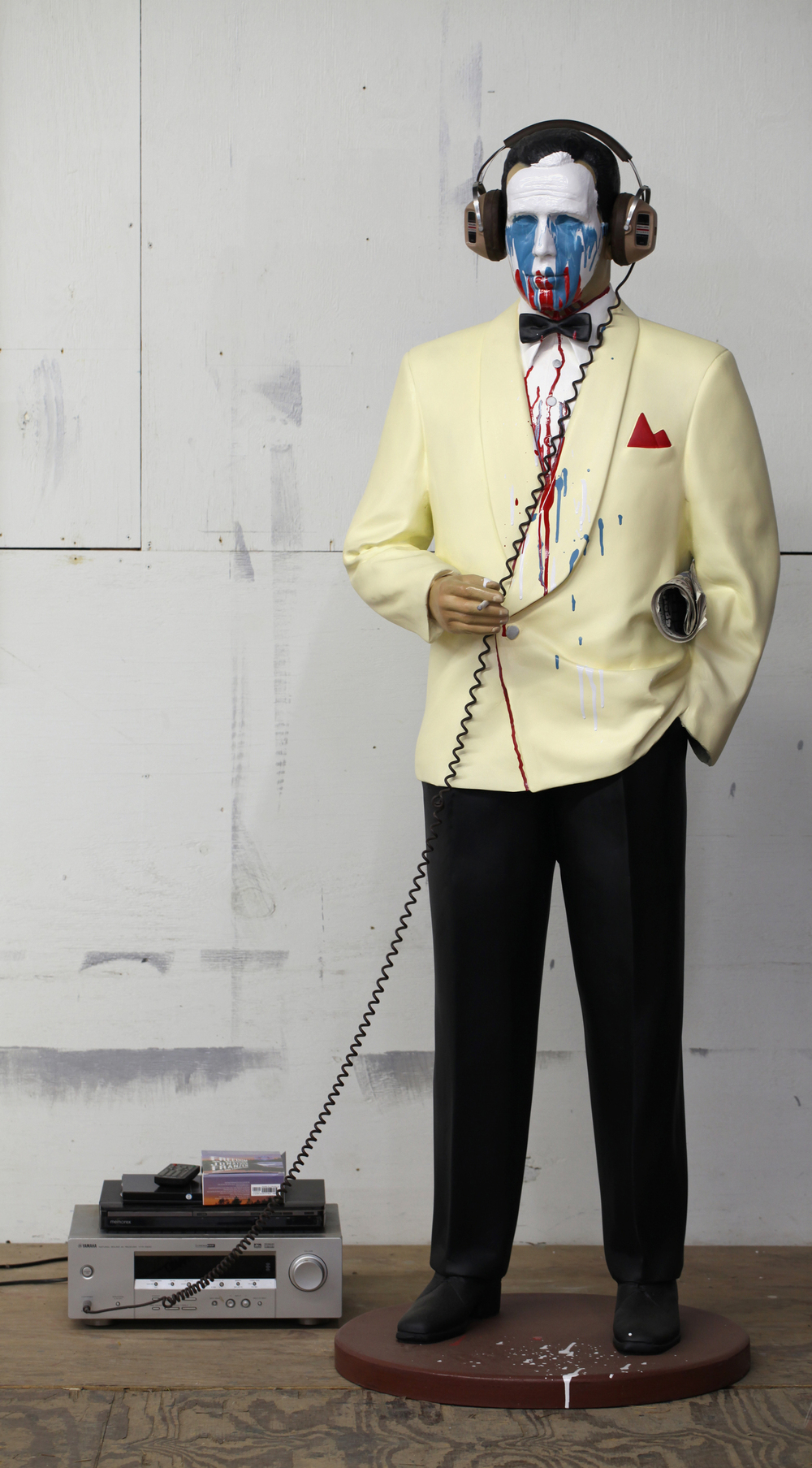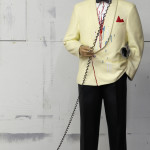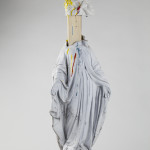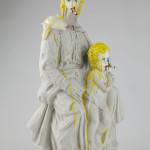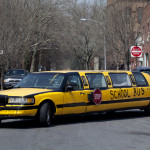These faces are extirpated in much the same way the members of the anonymous Bruce High Quality Foundation have blurred their own individual authorship. The collective was established upon the death of the apocryphal artist Bruce High Quality on September 11, 2001. According to the group’s mythology, the foundation carries on the legacy of High Quality, an artist who merged the pop-bright commercialism of Warhol with Beuys's aesthetic excursions into the weft of the social fabric. They maintain their anonymity in order to sidestep the thornier issues of authorship, as a protest against the bloated figure of the art world superstar, and yet this mystique also turns out to be a very effective marketing strategy. Such paradox is the hallmark of the collective—if not their raison d’etre—especially as they become increasingly enmeshed in the very cultural and economic systems they are critiquing. More and more they come dangerously close to what they satirize, and this is perhaps the point.
The primary material of the Bruce High Quality Foundation is the art industrial complex: the schools, museums, biennials, galleries, and foundations that form the institutional apparatus for the production and reception of art. The Bruces’ almost decade-long tenure on the scene has delivered irreverent, combative, and growingly profitable subversions of canonical artworks. In 2004, they mock-heroically reconstructed Gericault’s Raft of the Medusa on the banks of Brooklyn. In 2005, they chased a Robert Smithson replica through the New York Harbor. In 2007, they dressed in sports uniforms and hurled themselves against public works like Robert Indiana’s LOVE sculpture. And in perhaps their most utopian gesture, the group founded the Bruce High Quality University in 2009 as a "a self-organizing educational platform" offering free art classes out of a TriBeCa space as a palliative to institutionalized art education. They exploit the spectres of spectacle and consumption that comprise the public sphere. They are heretics, reenactors, propagandists, and libertines, their work desacralizing the totems of education, commerce, religion, and art.
The Bruces are iconoclasts in the oldest sense of the word. They create makeshift replicas and miniatures in order to annihilate them, either physically or symbolically through the use of irony and satire (At Brown, they enlisted students to help reconstruct the Met’s entire collection of Greek antiquities out of Play-Doh). Their artist talk/performance at the Granoff Center began with an oversized papier-mâché podium being wheeled out on stage like a golden calf, shortly before a projection of a cartoon president delivered a mocking address while smoking a cigarette and speaking in the clipped robotic tones of automated messages. The president was presented as a false idol, a symbol of an inflated yet vacuous power.
It’s interesting then that the group crafts their origin story, with High Quality’s demise on 9-11, from one of greatest acts of iconoclasm in modern memory: the destruction of the World Trade Center, symbol of a global modernity whose obliteration was intended as an international spectacle. Indeed, the opening wall text to Freedom is an imagined scenario in which the 9-11 hijackers struggle to choose a fast food chain at the airport. The faceless, amorphous configuration of the group, too, with their rallying cry that "freedom is nothing left to lose," resembles nothing so much more than a terrorist cell. This appropriation of the post 9-11 narrative, seizing upon the freedom-terror dialectic that has come to define the political ideology of the 21st century, is the most transgressive aspect of the Bruce High Quality Foundation’s show. And like the political invocation of terror used to legitimate American aggression, the collective draws its rhetorical power from manufacturing a feeling of crisis—a crisis in the state of the art world, in education, and in the body politic itself—which in turn works to license their antagonism. Consciously or not, the Bruce High Quality Foundation creates states of emergency.
But why? What is the point of all this icon-smashing, the elaborate concealments, the nihilistic disavowal of almost everything? The Bruce High Quality Foundation represents a complicated dance between cynicism and sincerity, disillusionment and hope, fact and fiction. They impart irony-laced manifestos that are at once satires and polemics, as if their self-conscious sarcasm might inoculate them against critique. Each deliberately amateur piece in Freedom carries the frustrated imprint of the artist struggling against the weight of too much history, the dense saturation of references and allusions and issues that have come to define our contemporary post-everything moment. "Why even try?" they seem to say.
I worry that what’s left is a void, an empty simulacra, not dissent itself but the hollow echo of it, a winking revolutionary burlesque. I worry they are art market darlings precisely because theirs is a fangless critique that presents no real threat to the current system—that far from being rebels they are, as their own imagery might suggest, clowns. And as the scholar Enid Welsford has written, "There is nothing essentially immoral or blasphemous or rebellious about clownage. On the contrary, it may easily act as a social preservative by providing a corrective to the pretentious vanity of officialdom, a safety-valve for unruliness." In the Bruce High Quality Foundation’s cleverness, they seem to have shed any illusions about the kind of heartfelt fist-pumping that once animated other rebellions, but at what cost? The collective scrapes away at meaning until there is nothing left but the act of scraping itself.
- Freedom (Bogart), 2012Mixed media, Freedom by Jonathan Franzen
- Sef-Portrait (Virgin), 2012Plaster bust, enamel, paint, cigarette
- Self Portrait (Scabby the Rat), 2011-2013Inflatable rat, enamel paint15ft high
- Private Education, 2013Limo, Enamel Paint, video component

